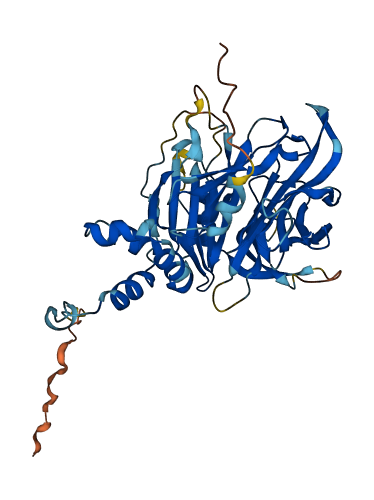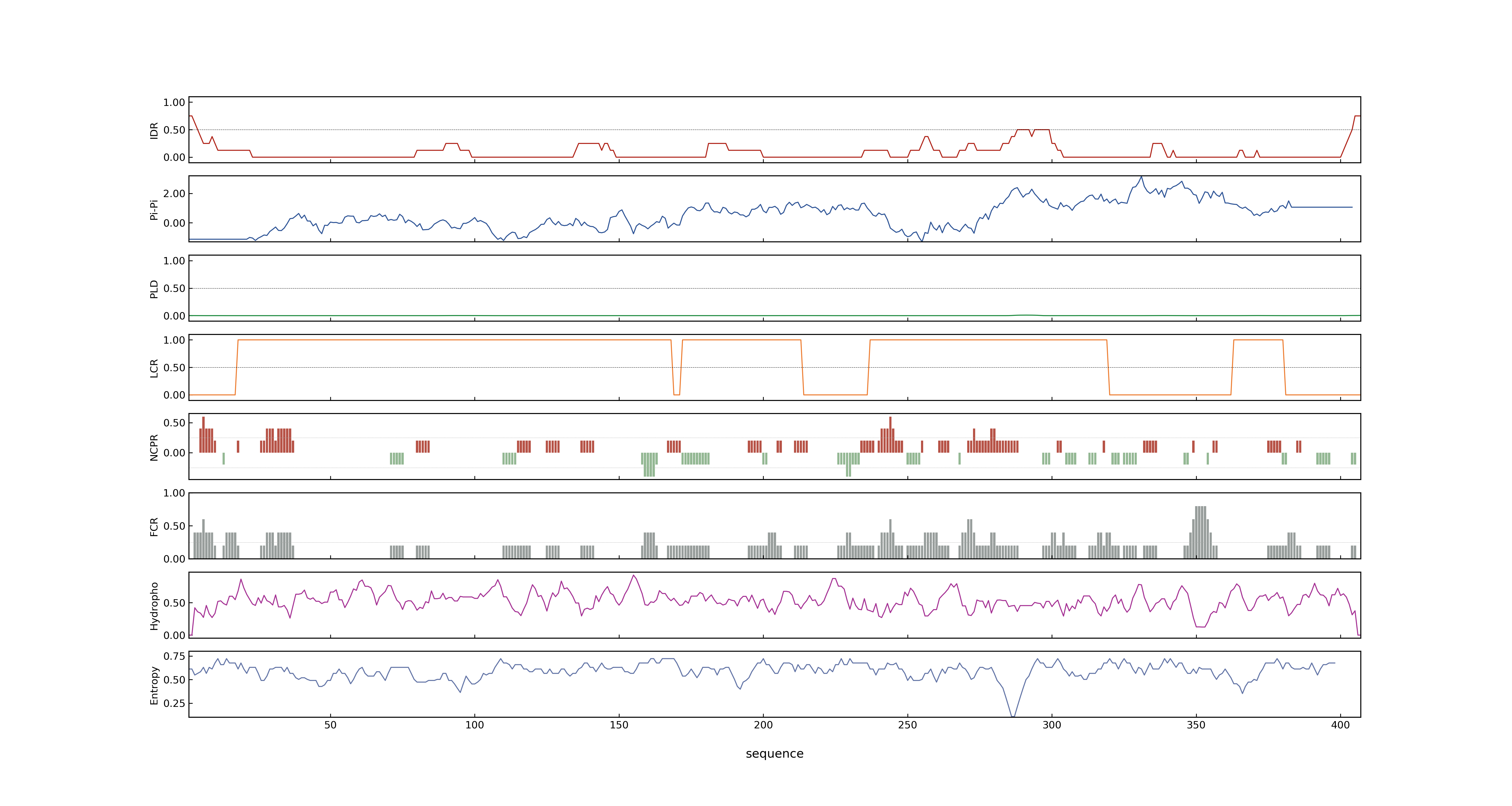- Information
- Symbol: APO1,OsAPO1,SCM2
- MSU: LOC_Os06g45460
- RAPdb: Os06g0665400
- PSP score
- LOC_Os06g45460.1: 0.0938
- PLAAC score
- LOC_Os06g45460.1: 0
- pLDDT score
- 84.74
- Protein Structure from AlphaFold and UniProt
- MolPhase score
- LOC_Os06g45460.1: 0.07791029
- MolPhase Result
- Publication
- ABERRANT PANICLE ORGANIZATION 1 temporally regulates meristem identity in rice, 2005, Dev Biol.
- A gene controlling the number of primary rachis branches also controls the vascular bundle formation and hence is responsible to increase the harvest index and grain yield in rice, 2010, Theor Appl Genet.
- Rice ABERRANT PANICLE ORGANIZATION 1, encoding an F-box protein, regulates meristem fate, 2007, Plant J.
- ABERRANT PANICLE ORGANIZATION 2/RFL, the rice ortholog of Arabidopsis LEAFY, suppresses the transition from inflorescence meristem to floral meristem through interaction with APO1, 2012, Plant J.
- New approach for rice improvement using a pleiotropic QTL gene for lodging resistance and yield, 2010, Nat Commun.
- Expression level of ABERRANT PANICLE ORGANIZATION1 determines rice inflorescence form through control of cell proliferation in the meristem, 2009, Plant Physiol.
- Ozone-Induced Rice Grain Yield Loss Is Triggered via a Change in Panicle Morphology That Is Controlled by ABERRANT PANICLE ORGANIZATION 1 Gene., 2015, PLoS One.
- Genbank accession number
- Key message
- Vegetative development is also affected in the apo1
- Leaves were formed rapidly throughout the vegetative phase, indicating that APO1 is also involved in temporal regulation of leaf production
- These phenotypes suggest that the APO1 plays an important role in the temporal regulation of both vegetative and reproductive development
- We previously reported that the ABERRANT PANICLE ORGANIZATION1 (APO1) gene, encoding an F-box-containing protein orthologous to Arabidopsis (Arabidopsis thaliana) UNUSUAL FLORAL ORGANS, suppresses precocious conversion of rachis branch meristems to spikelets to ensure generation of certain number of spikelets
- Positional cloning of the gene revealed that SCM2 was identical to ABERRANT PANICLE ORGANIZATION1 (APO1), a gene previously reported to control panicle structure
- Although SCM2 is a gain-of-function mutant of APO1, it does not have the negative effects reported for APO1 overexpression mutants, such as decreased panicle number and abnormal spikelet morphology
- In addition, APO1 is associated with the regulation of the plastchron, floral organ identity, and floral determinacy
- Phenotypic analyses of apo1 and floral homeotic double mutants demonstrate that APO1 positively regulates class-C floral homeotic genes, but not class-B genes
- Molecular studies revealed that APO1 encodes an F-box protein, an ortholog of Arabidopsis UNUSUAL FLORAL ORGAN (UFO), which is a positive regulator of class-B genes
- Further analysis indicated that APO2/RFL and APO1, the rice ortholog of Arabidopsis UNUSUAL FLORAL ORGANS, act cooperatively to control inflorescence and flower development
- ABERRANT PANICLE ORGANIZATION 2/RFL, the rice ortholog of Arabidopsis LEAFY, suppresses the transition from inflorescence meristem to floral meristem through interaction with APO1
- This alteration in growth rate is opposite to what is observed with the apo1 mutants that have a smaller inflorescence meristem
- However, in apo1, the main-axis meristem was converted to a spikelet meristem after producing a small number of branch primordia
- In addition, the branch meristems in apo1 became spikelet meristems earlier than in wild type
- Therefore, in the inflorescence, the apo1 mutation caused the precocious conversion of the meristem identity
- In the apo1 flower, lodicules were increased at the expense of stamens, and carpels were formed indeterminately by the loss of meristem determinacy
- Characterization of rice aberrant panicle organization 1 (apo1) mutants revealed that APO1 positively controls spikelet number by suppressing the precocious conversion of inflorescence meristems to spikelet meristems
- We report a recessive mutation of rice, aberrant panicle organization 1 (apo1), which severely affects inflorescence architecture, floral organ identity, and leaf production rate
- In the apo1-D dominant alleles, the inflorescence meristem starts to increase in size more vigorously than the wild type when switching to the reproductive development phase
- APO1 expression occurred not only in developing panicles but also in the developing vascular bundle systems
- It suggests that APO1 enhances the formation of vascular bundle systems which, consequently, promote carbohydrate translocation to panicles
- The HI1 allele is suggested to regulate the amount of APO1 expression, and thereby control the development of vascular bundle systems
- In this study, using chromosome segment substitution lines, we identified an effective quantitative trait loci (QTL) for culm strength, which was designated STRONG CULM2 (SCM2)
- A near-isogenic line carrying SCM2 showed enhanced culm strength and increased spikelet number because of the pleiotropic effects of the gene
- Collectively, these results suggest that the level of APO1 activity regulates the inflorescence form through control of cell proliferation in the meristem
- As the mutant inflorescences and flowers differed considerably between apo1 and ufo, the functions of APO1 and UFO appear to have diverged during evolution
- Habataki-genotype segregated reciprocal recombinant lines for the APO1 locus increased both the number of PRB (12-13%) and the number of grains per panicle (9-12%), which increased the grain yield per plant (5-7%)
- The PRB1 allele, which includes the APO1 open reading frame (ORF) and the proximal promoter region, controlled only the number of PRB but not the number of grains per panicle
- Here, we identified four dominant mutants producing an increased number of spikelets and found that they are gain-of-function alleles of APO1
- The APO1 expression levels are elevated in all four mutants, suggesting that an increase of APO1 activity caused the delay in the program shift to spikelet formation
- The resultant gene was ABERRANT PANICLE ORGANIZATION 1 (APO1)
- Overexpression of APO1 caused an increase in inflorescence branches and spikelets
- These data indicate that ozone-induced grain yield loss in Habataki is caused by a reduction in the APO1 transcript level through an increase in the levels of phytohormones that reduce leaf damage
- The Habataki allele of the APO1 locus in a near-isogenic line also resulted in grain yield loss upon ozone exposure, suggesting APO1 involvement in ozone-induced yield loss
- Connection
- APO1~OsAPO1~SCM2, RFL~APO2~SSC, ABERRANT PANICLE ORGANIZATION 2/RFL, the rice ortholog of Arabidopsis LEAFY, suppresses the transition from inflorescence meristem to floral meristem through interaction with APO1, Further analysis indicated that APO2/RFL and APO1, the rice ortholog of Arabidopsis UNUSUAL FLORAL ORGANS, act cooperatively to control inflorescence and flower development
- APO1~OsAPO1~SCM2, RFL~APO2~SSC, ABERRANT PANICLE ORGANIZATION 2/RFL, the rice ortholog of Arabidopsis LEAFY, suppresses the transition from inflorescence meristem to floral meristem through interaction with APO1, ABERRANT PANICLE ORGANIZATION 2/RFL, the rice ortholog of Arabidopsis LEAFY, suppresses the transition from inflorescence meristem to floral meristem through interaction with APO1
Prev Next

